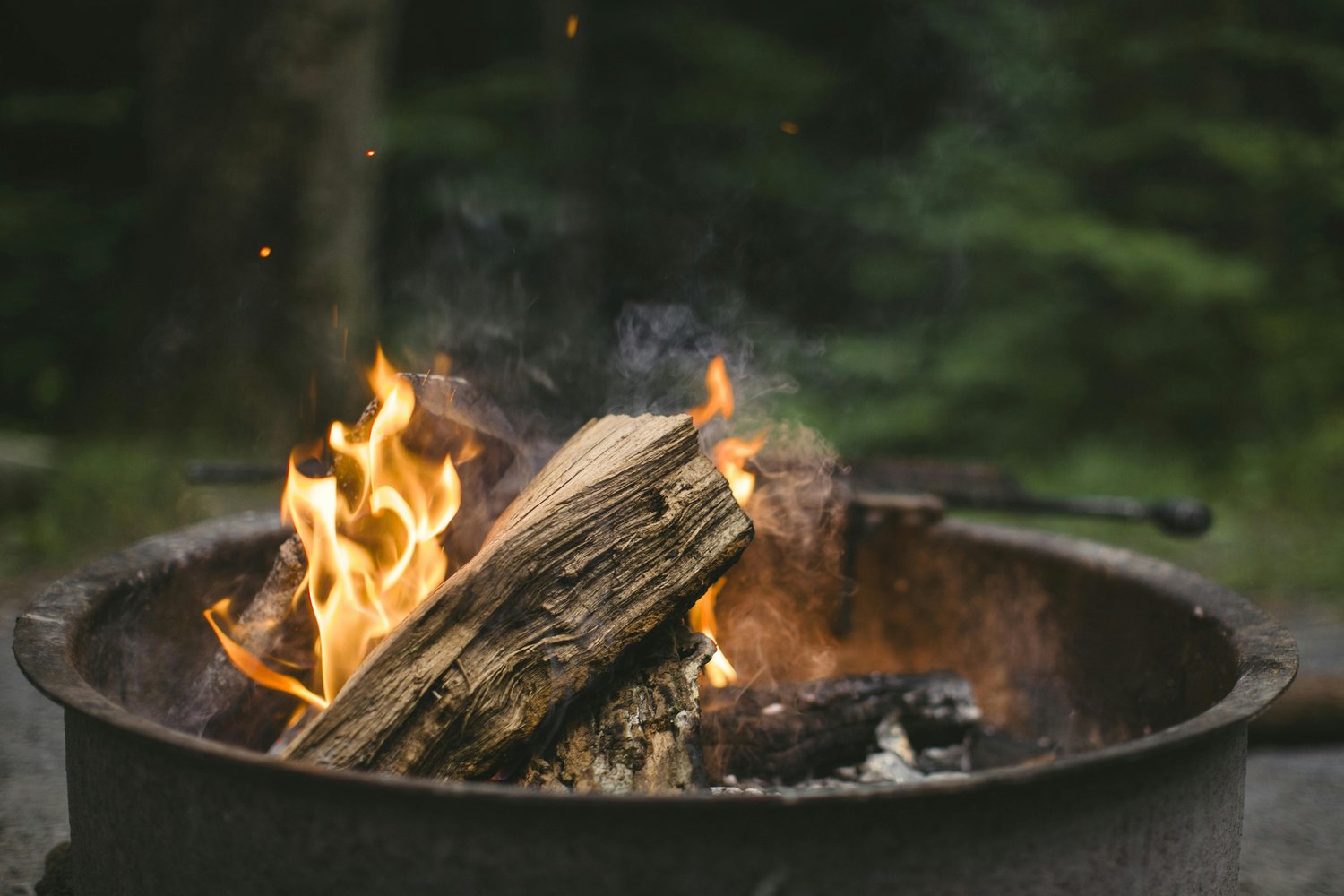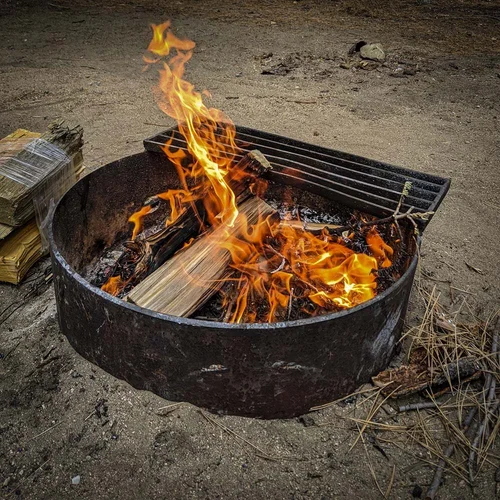Have you ever wondered if building a campfire will actually make the wood catch fire? You might think it’s simple—stack some wood, light a match, and watch it burn.
But there’s more to it than just sparks and smoke. Understanding how fire really works can help you build a campfire that’s safe, strong, and lasts longer. Keep reading, and you’ll discover the secrets to turning your wood into a warm, glowing blaze every time you light up your campsite.
How Campfires Ignite Wood
Campfires are a great way to enjoy the outdoors. They create warmth and light by burning wood. But how does the wood actually catch fire?
Understanding how campfires ignite wood helps us build safer and stronger fires. It involves simple science about heat, oxygen, and wood types.
Combustion Basics
Combustion is the process of burning. It happens when wood reacts with oxygen and heat. This reaction releases light and heat energy.
Wood must reach a certain temperature to start burning. This temperature is called the ignition point. Once wood reaches this point, it produces flames.
Role Of Heat And Oxygen
Heat helps wood reach its ignition point. You need enough heat to dry the wood and start the burning process. Without heat, wood stays cold and won’t burn.
Oxygen feeds the fire. It reacts with hot wood to keep the flames alive. If you block oxygen, the fire will go out quickly.
- Heat raises wood temperature
- Oxygen supports the burning process
- Both are needed for fire to keep burning
Types Of Wood And Flammability
Different woods burn in different ways. Softwoods like pine catch fire fast but burn quickly. Hardwoods like oak burn slower and last longer.
Wood moisture also affects how well it burns. Dry wood lights easily. Wet or green wood is hard to burn and creates more smoke.
- Softwood: lights fast, burns fast
- Hardwood: lights slow, burns longer
- Dry wood: burns well and clean
- Wet wood: hard to burn, smoky

Credit: www.takethetruck.com
Campfire Setup And Wood Safety
Building a campfire is fun and useful for cooking or warmth. It is important to set up the fire safely to avoid accidents.
Choosing the right wood and placing the fire carefully helps keep the fire under control. This keeps people and nature safe.
Safe Distance And Placement
Set your campfire far from tents, trees, and dry grass. This lowers the chance of fire spreading.
Clear the area around your fire spot. Remove leaves, sticks, and other flammable materials.
- Keep fire at least 10 feet from tents and gear
- Choose a flat, open space without overhanging branches
- Build a fire ring with rocks to contain flames
Choosing The Right Wood
Use dry, seasoned wood for your campfire. Wet wood makes smoke and is hard to burn.
Avoid using wood that is painted, treated, or has nails. These can release harmful chemicals when burned.
- Use hardwoods like oak or maple for longer burn
- Softwoods like pine burn fast but can spark more
- Never burn trash or plastics
Preventing Accidental Fires
Watch your campfire at all times. Never leave it alone while burning.
Have water or sand nearby to quickly put out the fire if needed.
- Extinguish the fire fully before going to sleep or leaving
- Pour water on the fire and stir ashes until cool
- Do not build fires in windy conditions
Factors That Influence Wood Ignition
Building a campfire can cause wood to catch fire, but several factors affect how easily it ignites. Understanding these helps you build a safe and effective fire.
Wood ignition depends on the wood’s condition and the environment. Each factor plays a role in starting and keeping the fire alive.
Moisture Content In Wood
Wood with high moisture is hard to ignite. Wet wood absorbs heat, slowing down ignition. Dry wood catches fire faster and burns better.
Freshly cut or green wood contains a lot of water. Seasoned wood is dried and has less moisture, making it easier to burn.
- Dry wood ignites quickly
- Wet wood produces smoke and steam
- Season wood for at least 6 months
- Store wood in a dry place
Wind And Weather Effects
Wind helps fire by bringing oxygen to the flames. A gentle breeze can make wood catch fire faster. Strong wind can spread fire quickly but may also blow it out.
Rain or high humidity makes wood damp. This slows ignition and can stop a fire from starting. Cold weather also affects how fire burns.
- Light wind improves fire growth
- Strong wind risks spreading fire
- Rain and humidity reduce ignition
- Cold weather slows fire start
Wood Size And Arrangement
Small wood pieces catch fire faster than large logs. Thin sticks and twigs ignite quickly and help build heat. Large logs burn longer but take more time to light.
How you arrange the wood matters. Good airflow between pieces helps fire grow. Stacking wood too close blocks air and slows ignition.
- Use small sticks to start the fire
- Arrange wood for air to flow
- Lean sticks or build a teepee shape
- Add bigger logs after flames grow
Common Misconceptions About Campfires
Many people have wrong ideas about campfires and how they work. These myths can cause confusion about fire safety.
This article clears up some common misunderstandings about campfires and wood catching fire.
Does Smoke Prevent Fire Spread?
Some think smoke stops fire from spreading. Smoke is just burned particles rising into the air. It does not block fire.
Smoke can show where fire is active, but it does not stop flames or sparks from moving to new wood.
Myth Of Spontaneous Wood Ignition
People believe dry wood can catch fire on its own without a spark. This is not true. Wood needs heat and a spark.
Wood will not suddenly burst into flames just from being outside or sitting near a campfire.
Campfire Sparks And Ember Risks
Sparks and embers from a campfire can fly into dry wood or leaves. This can start new fires away from the main fire.
It is important to keep a safe distance between your campfire and any wood piles or dry grass nearby.
- Sparks can travel over 10 feet in the air
- Embers can stay hot for hours and ignite new fires
- Clear the area around your campfire of dry materials
Tips For Managing Campfire Safety
Building a campfire can be fun and useful for cooking or warmth. It is important to keep safety in mind to prevent accidents.
Proper care helps stop the fire from spreading and protects the environment around you.
Extinguishing Campfires Properly
Always put out your campfire before leaving the area. Use water to soak all the ashes and wood.
Stir the ashes with a stick to make sure everything is wet and cool. Feel the ashes with your hand to check if they are cold.
- Pour water slowly over the fire
- Stir the ashes to reach hidden embers
- Repeat pouring and stirring until cold
- Never bury the fire, it can still burn underground
Monitoring Fire Conditions
Keep an eye on the fire and the weather while your campfire burns. Wind can spread sparks to dry grass or trees.
Do not build a fire on very dry or windy days. Always stay close and watch the fire until it is fully out.
- Check local fire warnings before lighting
- Keep fire small and manageable
- Clear the area around the fire of leaves and debris
- Have water or a shovel nearby for quick control
Emergency Preparedness
Be ready in case the fire gets out of control. Know how to call for help and what to do first.
Have tools on hand to control or put out the fire fast. Teach everyone in the group about fire safety rules.
- Keep a bucket of water or sand near the fire
- Have a shovel or fire extinguisher ready
- Know the emergency phone number for your area
- Plan a quick escape route if needed

Credit: www.takethetruck.com

Credit: www.cedarlanervresort.com
Frequently Asked Questions
Can Building A Campfire Make Nearby Wood Catch Fire?
Yes, campfires can ignite nearby wood if sparks or embers land on dry material. Always keep a safe distance and clear flammable debris around the fire.
How To Safely Build A Campfire To Prevent Wood Fires?
Clear a 10-foot area of leaves and twigs, use a fire ring, and never leave the fire unattended. Keep water or sand nearby to extinguish flames quickly.
What Types Of Wood Are Safest For Campfires?
Hardwoods like oak, maple, and hickory burn longer and produce less smoke. Avoid resinous softwoods like pine, as they can spark and increase fire risk.
Can Moisture In Wood Prevent Campfire Ignition?
Yes, wet or green wood resists catching fire easily. Dry wood ignites faster and burns more efficiently, making it ideal for campfires.
Conclusion
Building a campfire requires patience and care. Wood doesn’t catch fire instantly. Start with small twigs. Gradually add larger pieces. Oxygen is crucial for flames. Position logs to allow airflow. Keep safety in mind always. Supervise the fire closely. Extinguish it completely when done.
Enjoy the warmth and ambiance. Nature’s beauty enhances the experience. Camping brings peace and joy. Gather friends and family around. Share stories and laughter. Create lasting memories together. Embrace the simplicity of the moment. Nature’s tranquility is truly special. Appreciate every moment spent outdoors.

